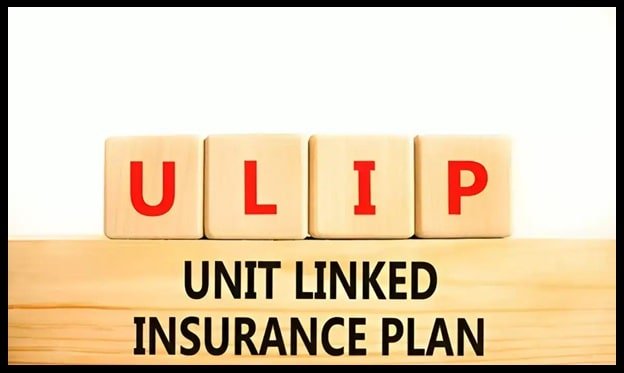In 2025, the demand for balanced financial solutions is stronger than ever. With market volatility, inflation, and shifting personal goals, investors are looking for products that combine growth with security. A unit linked insurance plan (ULIP) has become a preferred choice for many, offering life insurance protection along with market-linked investment opportunities. However, one question that frequently arises is whether the ULIP charges are justified. To answer this, it is important to understand how ULIPs work, what charges apply, and the value they deliver over the long term.
What is a unit linked insurance plan?

A unit linked insurance plan is a hybrid financial product that serves two purposes: providing life insurance cover and enabling investment in funds such as equity, debt, or balanced options. A portion of the premium ensures financial protection for the policyholder’s family, while the remainder is invested in chosen funds to build wealth.
This dual nature allows ULIPs to stand out from pure insurance or pure investment products. They promote disciplined savings through regular premium payments and offer flexibility to switch between funds as market conditions change. For long-term financial planning, ULIPs continue to be one of the most adaptable products available in 2025.
Understanding ULIP charges
ULIP charges are essentially fees levied by insurers to manage and administer the policy. While these costs were once considered high, regulatory reforms and market competition have made them more transparent and affordable. The most common charges include:
- Premium allocation charge – A small percentage deducted from each premium to cover distribution and initial expenses.
- Fund management charge – Charged for managing the investment funds; usually a percentage of the fund’s value.
- Mortality charge – The cost of providing life cover under the plan, based on the insured’s age and health.
- Policy administration charge – A fee for maintaining the policy and related services.
- Switching charge – Applied if the policyholder exceeds the free limit of fund switches.
- Surrender charge – Levied if the plan is discontinued before the minimum lock-in period.
Understanding these charges is critical for evaluating the cost-effectiveness of a unit linked insurance plan.
Are ULIP charges worth it?
The question of whether ULIP charges are worth paying depends largely on how the product is used. While charges reduce the investible portion of premiums in the early years, their impact diminishes over time as the fund value grows. Long-term investors often find that the benefits outweigh the costs.
1. Dual advantage of insurance and investment
Unlike mutual funds, a ULIP provides life cover. Unlike traditional insurance, it offers growth potential. The combined advantage often justifies the charges.
2. Flexibility to switch funds
The ability to switch between equity and debt funds without tax implications adds significant value, especially in volatile markets. Charges for switching are minimal compared to the flexibility gained.
3. Long-term wealth creation
Over a 15–20 year horizon, the effect of ULIP charges becomes marginal. Compounding ensures that fund growth overshadows the initial deductions.
4. Goal-based planning
ULIPs allow investors to align their policies with specific goals such as retirement, children’s education, or wealth creation. This structured approach makes charges a small trade-off for goal fulfilment.
Regulatory impact on ULIP charges
Over the last decade, regulators have worked to reduce and standardise ULIP charges. Fund management charges, for instance, are capped to protect policyholders. Surrender charges have also been rationalised, making early exits less punitive.
In 2025, ULIPs are far more cost-effective compared to earlier versions. Transparent disclosure requirements ensure that investors clearly understand how charges are applied, improving trust and adoption.
Using tools to assess value
One of the best ways to evaluate ULIPs is by using online calculators. A ULIP return calculator allows investors to input premiums, tenure, expected returns, and charges to estimate maturity values. This helps demonstrate how charges impact the final corpus and highlights the benefits of staying invested long term.
For example, an investor paying Rs. 10,000 per month for 20 years may see initial deductions reduce their early fund value. But with consistent growth, the maturity benefit often far exceeds the total premiums paid, even after charges.
Advantages beyond numbers
While charges can be quantified, ULIPs also provide intangible advantages:
- Peace of mind – The life cover ensures family protection.
- Financial discipline – Regular premiums enforce savings habits.
- Customisation – Choice of funds, riders, and premium terms tailor the policy to individual needs.
- Tax benefits – Premiums and, in some cases, maturity proceeds enjoy tax advantages.
These benefits make ULIPs more than just an investment—they are long-term financial planning tools.
When ULIP charges may feel high
ULIPs are not ideal for short-term investors. Those exiting within five years may feel that charges reduce value significantly. The product is designed for long horizons, where charges flatten out and benefits accumulate. Hence, suitability depends on commitment.
Conclusion
In 2025, a unit linked insurance plan continues to be one of the most versatile financial products available. While ULIP charges may appear high in the initial years, they are balanced by the advantages of combined protection, market-linked growth, fund-switching flexibility, and tax efficiency. For long-term investors, the charges are not only manageable but worthwhile when measured against the benefits.
By understanding the structure of ULIP charges, using return calculators to estimate outcomes, and committing to long-term goals, individuals can make the most of ULIPs. Ultimately, the value lies not just in the numbers but in the financial security and discipline that a unit linked insurance plan provides.

